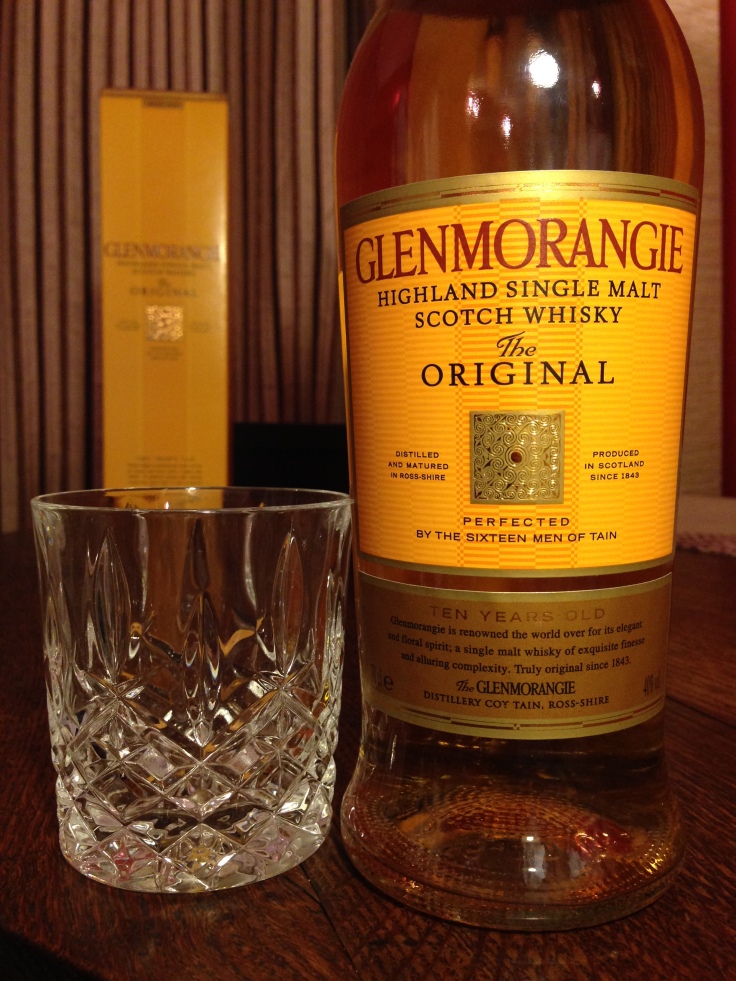It’s probably fair to say that one of the most intimidating aspects about drinking single malt whisky is the price associated with it. It’s one of the things that can make it elitist and can put a lot of people off. To play devil’s advocate though, if you were paying rent on a place for at least 10 years, you’d probably want a decent return on selling part of it, and that’s what distilleries need to do to earn their way. It therefore follows that the older the whisky, the more investment the distillery has put into their liquid and the higher the income required. There’s also a certain prestige that comes with age and, at a nice round number, that’s why the 10 year old of any distillery is usually their opening staple.
What does a 10 year old whisky represent? Well, for those who enjoy the odd wee dram, it’s the first step to discovering the distillery’s main product. With a 10 year old, you’re going to find out the whisky’s key characteristics: is it heavy or light; is it smoky or not; does it actually taste nice? This is true of any ‘core range’ whisky that a distillery has to offer but, as a rough rule, the 10 seems to be the magic number that shows off their potential or even their best offering.

Putting these points together, a 10 year old is most likely to be the cheapest single malt that a distillery has to offer. To us, this means that the 10 is often the one that is most readily available in the shops or in the pub, and as such is your gateway to discovering single malts.
One of the best places to start is with one of the most recognisable names in single malt: Glenmorangie. Powered by successful advertising and sponsorship deals, Glenmorangie is found in pretty much every supermarket and pub and, to be fair, for good reason. The Glenmorangie 10 is an example of a decent, creamy all rounder. It has a nice, satisfying body whilst still having that distinctive whisky burn/rasp. It is certainly a simpler tasting whisky than most with predominantly caramel-like flavour and texture, but, on some days, that can be exactly what you’re looking for and so it’s a good one to have in the arsenal and certainly one to start exploring whether or not whisky is for you.

Personally, the Aberlour 10 was the first single malt that I’d ever bought, and that’s largely because it was £20 for a bottle in the supermarket. Of the more readily available whiskies it is certainly a great starter for 10 as a lighter all rounder. It’s a slightly flowery and nutty dram that has a pretty smooth finish. It may just be down to personal experience and fond memories but it is a good place to start and appreciate the difference between a clean single malt and the cheap, rough stuff.

On the other side of the spectrum is the Laphroaig 10. Anyone who is starting to discover single malt whisky will quickly come across this bad boy. The first thing that is striking, before you even get to the liquid itself, is the rather alien looking word and it’s distinctive black and white label on a green bottle. Pronounced La-froyg, it instantly displays elegance and class and has a mysterious, cult like feel. And why is that? Because when you open it: BOOM!!! The stuff is liquid dynamite. Amongst the peatiest/smokiest drams out there, it packs a unique punch that will stay with you forever. (I could go on and on about Laphroaig and the other Islay peat monsters – see also Ardbeg 10 – but I’ll save that for another time). Out of their entire range, the Laphroaig 10 is the distillery’s key player and will probably become your regular tipple if peat becomes your passion.

Similarly Talisker 10 is also a great opening gambit. As with Laphroaig, the Talisker 10 is a regularly available malt and, being from the western islands off Scotland, also packs a smoky punch, but with a totally different character to Laphroaig 10. It is widely recognised that your palate becomes more attuned to tasting whisky when you have 3 different whiskies next to one another and it is certainly worth having a nip of Laphroaig and Talisker back to back to get your taste buds in tune to what lies beneath the smoke. Talisker has a smoother edge whilst still delivering smoke and has a distinctive coastline saltiness, which is the brand’s key feature and makes it surprisingly more-ish.

What can be daunting about getting into single malts is that there is a lot to choose from. The big money backing of Diageo behind their ‘Classic Malts’ range is certainly populating the local pubs with more variety, and the Cragganmore 12 and Glenkinchie 12 that sit within that range are also a good base for getting to discover what you like. Also, for the smaller, independent distilleries, the 10 year old is the landmark expression that represents a decade of effort and anticipation that gets their name on the shelves (the Benromach 10 and the new Bruichladdich Laddie 10 being fine examples of that).
Whether or not you agree with the large commercial businesses getting involved (which is another article for another time) you cannot deny that the increasing range of choice can only be a good thing to the enthusiasts and beginners alike and it certainly seems that a distillery’s first double digit dram is the best place to start and maybe even dwell on your whisky voyage.
M

Leave a comment